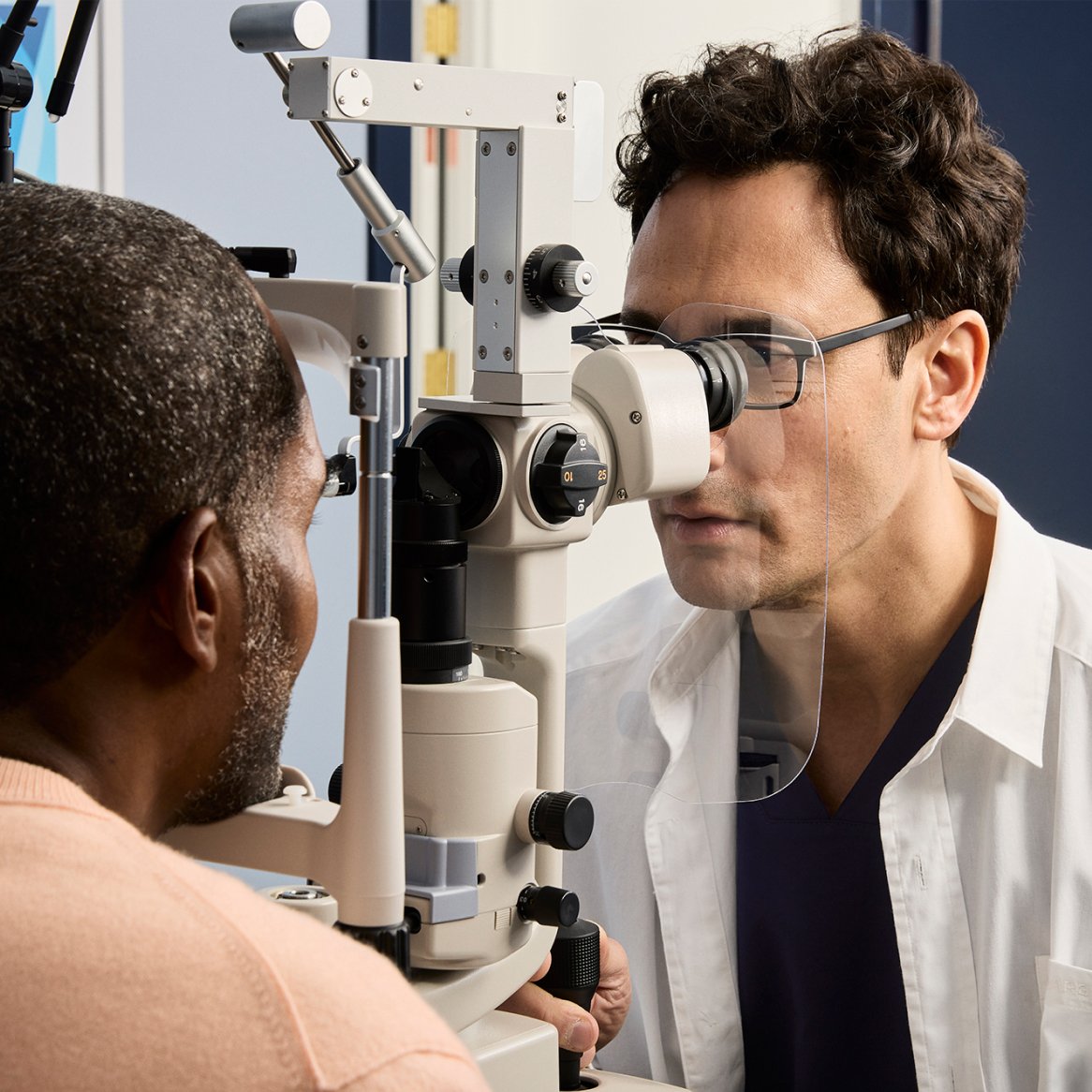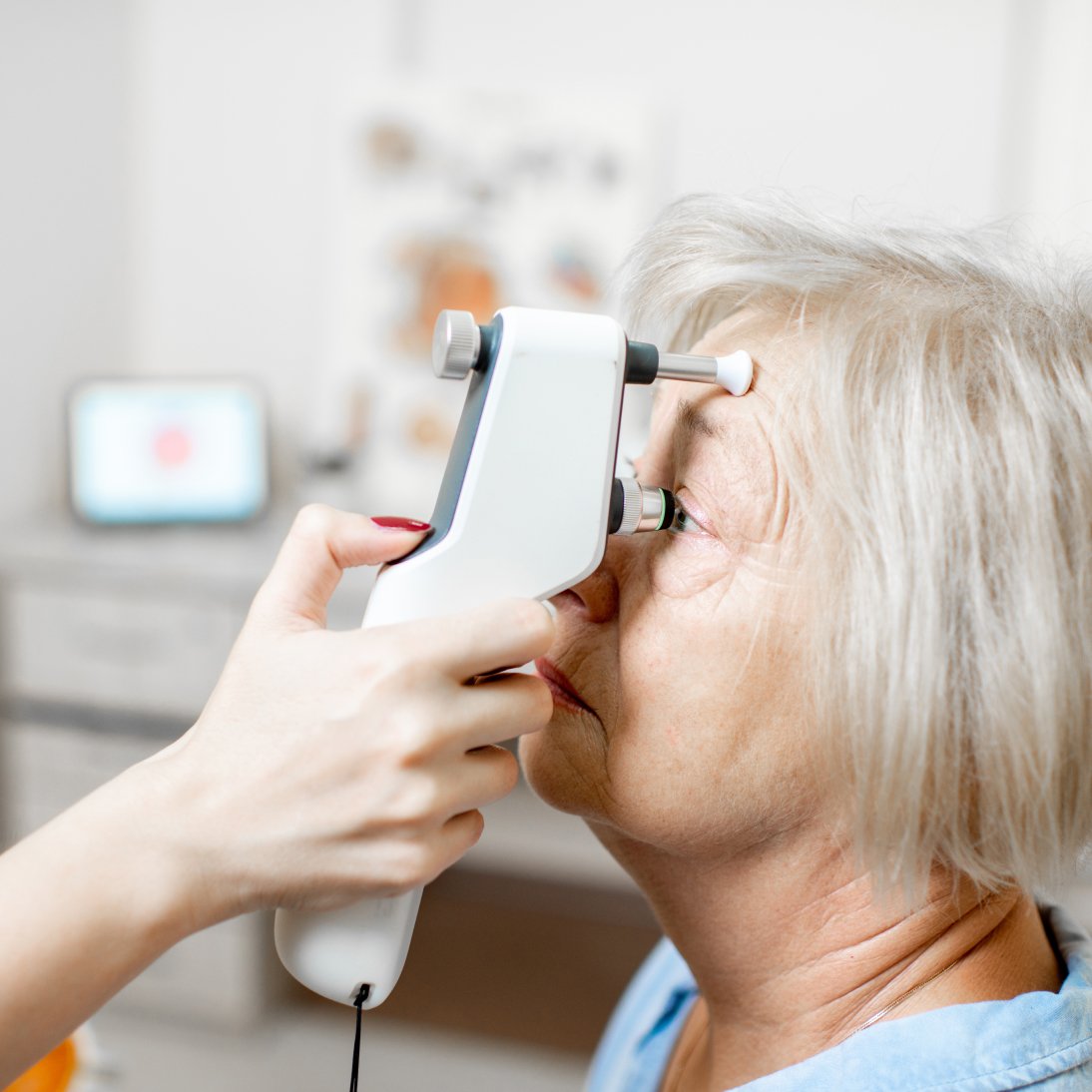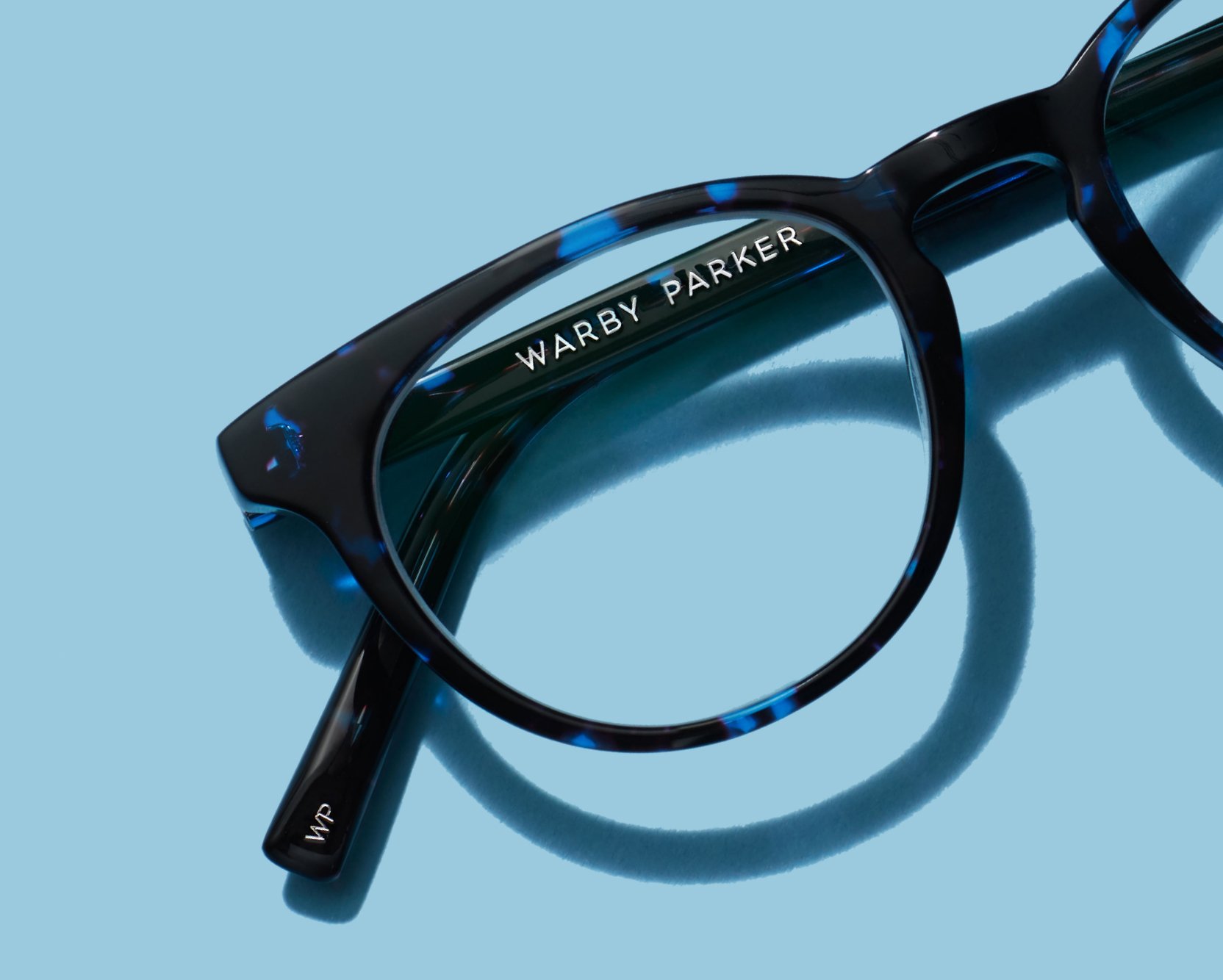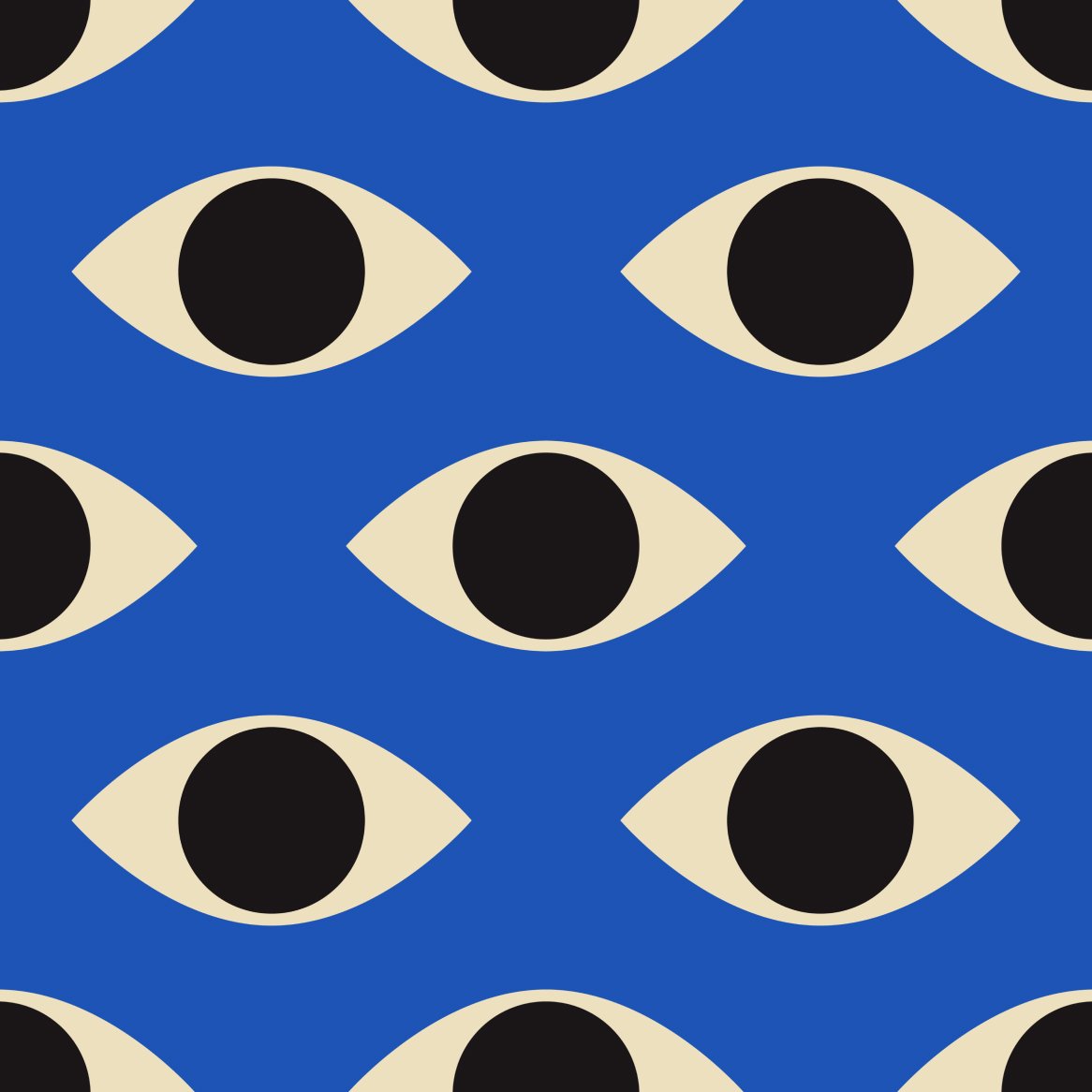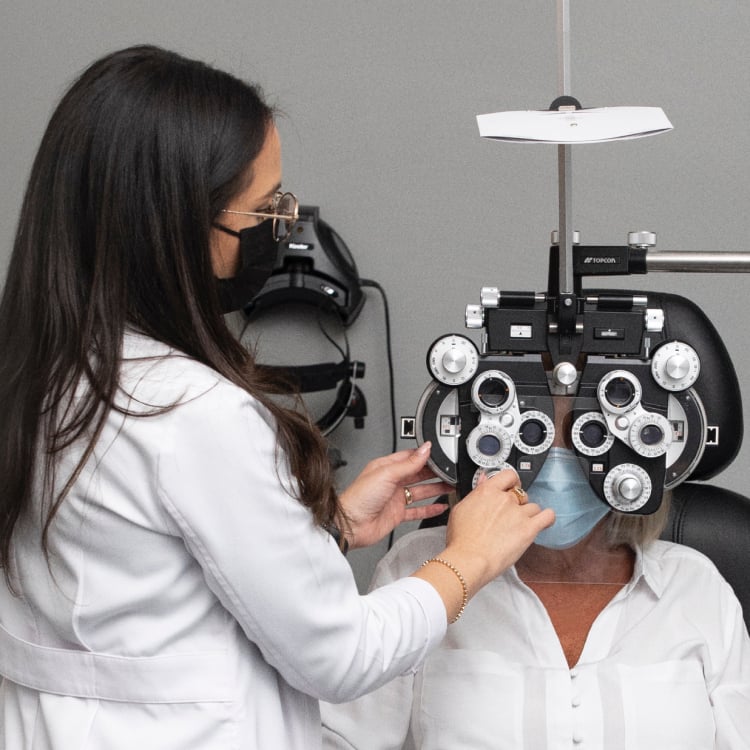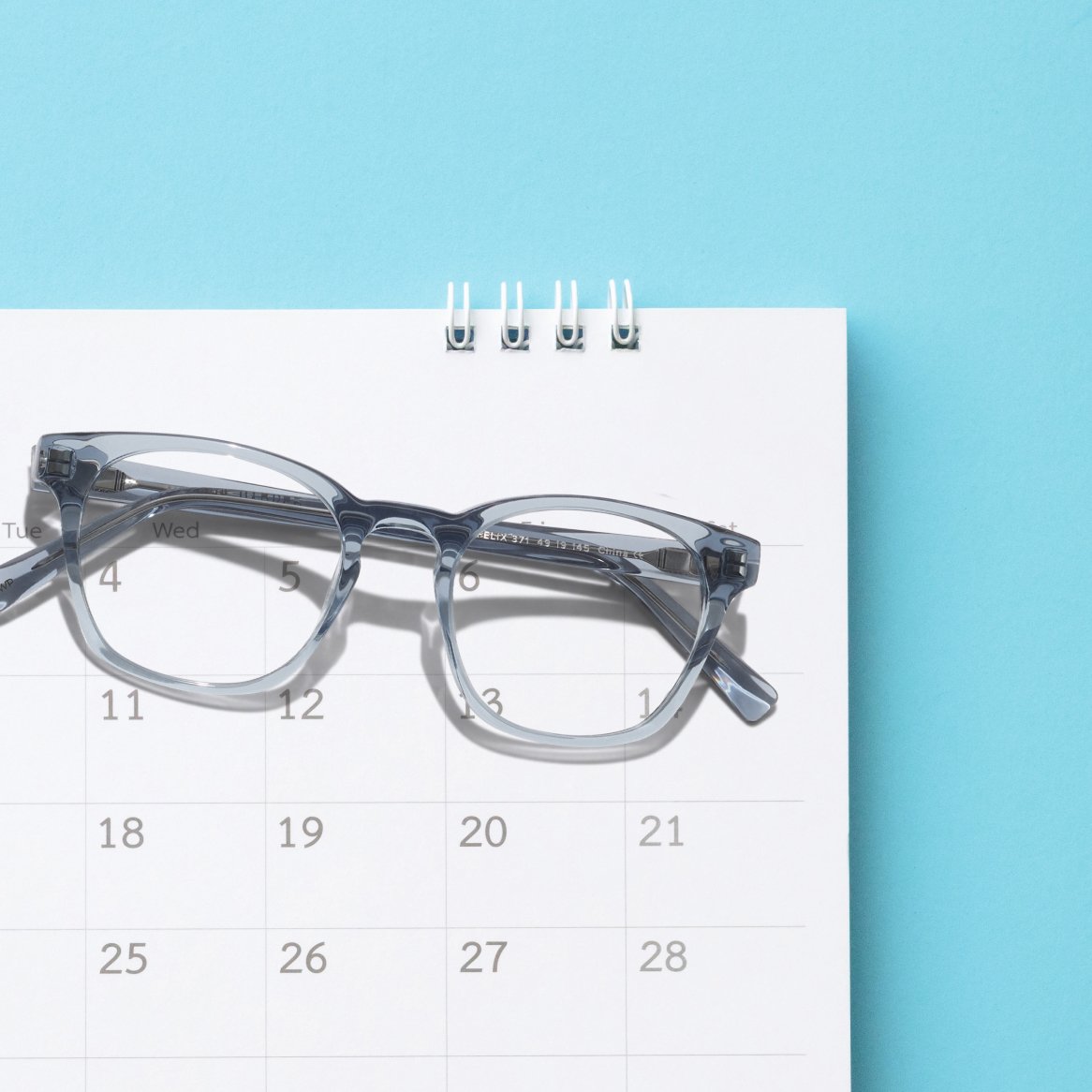An air puff test is a form of tonometry—a test for measuring how much fluid pressure is inside your eyes (otherwise known as intraocular pressure). More specifically, this test is a form of non-contact tonometry, meaning it allows optometrists to measure intraocular pressure without physically touching the eye.
This is an important measurement, but some people dislike the awkward feeling of having air blown into their eyes. That’s understandable! In this article, we’ll explore the eye puff test, delving into how it works and what other alternatives are out there.
How the Air Puff Eye Test Works
An air puff tonometer (the tool the eye doctor uses for this test) launches a small puff of air into the eye. Once the air is released, the air puff tonometer can then measure the intraocular pressure based on the time it takes for the air to bounce back.
Throughout the test, nothing actually touches your eye other than a small burst of air.
Does the Air Puff Test Hurt?
No, the air puff test shouldn’t be painful, but people may find it uncomfortable. Some patients may feel anxious about the eye air puff test because of the odd sensation it causes.
Is the Air Puff Test Necessary?
High eye pressure can damage the cornea or lead to tunnel vision. It’s also a risk factor for glaucoma and other eye conditions. So, it is necessary for your eye doctor to keep tabs on your intraocular pressure—it’s an important part of maintaining your eye health. (Read more: What’s a normal eye pressure range?)
With that said, the eye puff test isn’t the only way to measure intraocular pressure.
Other Methods for Checking Eye Pressure
Air puff tonometry isn’t the only way to measure eye pressure. There are other approaches that optometrists and ophthalmologists can use to measure the intraocular pressure of their patients. Let’s take a closer look at these other tonometry methods.
Rebound Tonometry
Rebound tonometry has become popular worldwide as an alternative to an eye puff test. It doesn’t require puffs of air, anesthetics, or eye drops of any kind. It’s also kid-friendly. (Warby Parker optometrists use this method.)
For this type of tonometry, an optometrist uses an Icare® tonometer to measure eye pressure. This device measures intraocular pressure by sending a plastic ball to the cornea and back. The time it takes the ball to bounce back determines the eye’s pressure. This plastic ball is so tiny, fast, and gentle that its contact is painless—often imperceptible, even. Most people describe it as a tickle in their eyelashes.
Applanation Tonometry
During an applanation tonometry test, the optometrist drops a small amount of numbing agent and yellow dye into the patient’s eye. Sometimes the dye and numbing agent are in the same drops, delivered at once. (Don’t worry—they’re both non-toxic and very safe.)
After their eyes have adjusted, the patient looks into a machine called a slit lamp. Once they look into this device, the doctor (gently!) places a small, glowing tonometer probe on the surface of each eye to measure the intraocular pressure manually.
This test might sound unpleasant, but the probe is tiny, and the touch is light and quick. Because the eye is numb, the patient won’t feel the probe—they’ll just see the blue light in front of their eye.
No Need to Fear the Eye Air Puff Test
Don’t let fear of the air puff test prevent you from keeping up with your annual eye exams—regular exams are vital to your eye health. Just remember that there are multiple ways to check eye pressure. At Warby Parker, the iCare Tonometer is the preferred method for testing intraocular pressure. When you book your exam, know that we’ll make your experience as comfortable and worry-free as possible.
You can find a local optometrist who uses a method you’re comfortable with. And don’t hesitate to talk to your eye doctor if you have any questions or feel any anxiety about eye exams.

